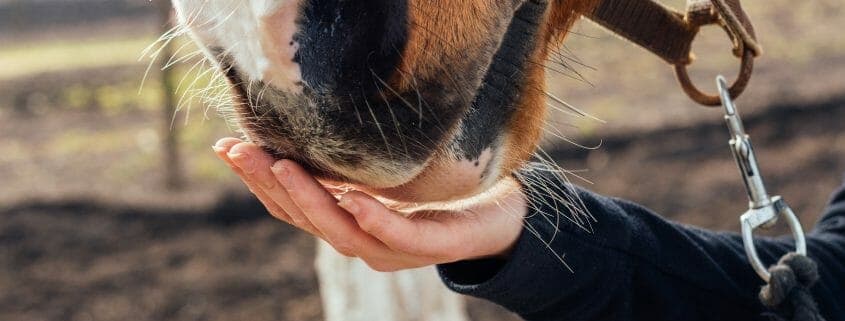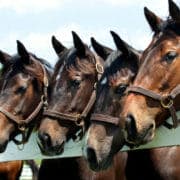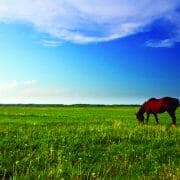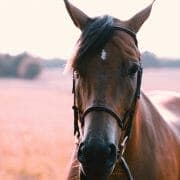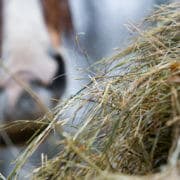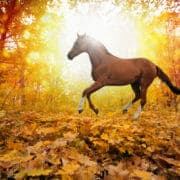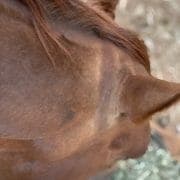Drought Feeding: Keeping Your Horse Healthy
How to feed your horse in a drought
Drought conditions seem to be more and more common these days. Less water means less grass and hay, which raises the question: how can you feed your horse properly during a drought? Many of us in Australia have been dealing with drought conditions, increasingly we are having to turn to sources of hay outside of the commonly used lucerne, grassy/meadow, rhodes, clover, oaten and wheaten hays. Not all alternative hay types are suitable for horses however so be careful when choosing an alternative hay or chaff for your horse.
Alternative Sources of Hay and Chaff
Some suitable and unsuitable alternative hays and chaffs include:
Suitable Hay/Chaff Types:
• Well cured grass or legume silage
• Pea hay or straw
• Wheat or barley straw
• Canola hay
• Teff Hay (but don’t feed as the only hay and be aware it can be high in starch and sugars)
• Sugarcane hay (avoid for Cushing’s horses or laminitic horses)
• Vetch hay (don’t feed more than 0.5kg/100 kg bodyweight)
• Barley hay/chaff (feed with caution if it has intact seed heads with long awns, avoid for Cushing’s horses or laminitic horses)
• Triticale hay/chaff (avoid for Cushing’s horses or laminitic horses)
Unsuitable Hay/Chaff Types:
• Lupin hay (may cause lupinosis)
• Sorghum/forage sorghum hay (may cause prussic acid or hydrocyanic acid poisoning)
• Red clover and alsike clover hay/chaff (may cause liver damage and photosensitisation)
Regardless of the hay type you do choose, ALWAYS make sure it is clean and free of mould. If the hay is dusty, it should be dampened down prior to feeding.
And remember, all these different types of hay will affect what else you need to feed to keep diets balanced and meeting requirements. This is where FeedXL can help. Simply enter the hay you are feeding and check that your supplementary feeds and supplements are still able to meet requirements! Even with all the changes of hay, keeping the diet balanced will keep your horse glowing and in pristine health!
Sand and Dirt Accumulation
Horses naturally eat quite a bit of soil! Under normal circumstances however the large amount of fibre moving through their gut acts to move the sand and dirt through their gut and out in their manure… so normally it won’t accumulate. When feeding your horse in a drought however, the amount of soil they eat increases due to grazing very close to virtually bare ground. And often the amount of fibre they have access to is reduced. So, it’s a double whammy… more sand and dirt in their gut and less fibre to clear it. This situation often results in accumulation of sand and dirt, irritation of the gastrointestinal tract and colic or diarrhea.
The best way to clear sand and dirt from a horse’s gut is to feed lots and lots of hay. But this isn’t always possible during a drought. An alternative and also very effective way of clearing it is to feed psyllium husk. Psyllium husk is a fibre that absorbs water in the gut and turns into a really stick goo (technical term!) that is able to shift sand and dirt out of the gut.
Interesting recent research paper here showing significant sand and dirt accumulation being successfully shifted in 4 days using a combination of psyllium husk and epsom salts https://www.sciencedirect.com/…/arti…/pii/S1090023318302648…
For those of you who would like to use psyllium without nasogastric tubing it, we have good success feeding 50 grams per 100 kg of bodyweight per day. Feed it in a single meal, for 5 days in a row, mixed with something your horse loves the taste of. Make the feed very, very slightly damp then tip the psyllium in and mix it around. Don’t wet it too much as most horses don’t like the taste and/or texture of wet psyllium. If your horse was showing signs of sand or dirt accumulation (mild colic or diarrhea), give the horse a break for 5 days and then repeat the 5 day treatment. You can continue to do this as long as you feel necessary.
Want to try FeedXL?
Get EVEN MORE practical and personalised feeding guidance when you sign up to FEEDXL.
Do you have a question or comment? Do you need help with feeding?
We would love to welcome you to our FeedXL Horse Nutrition Facebook Group. Ask questions and have them answered by PhD and Masters qualified equine nutritionists and spend time with like-minded horse owners. It’s free!
Click here to join the FeedXL Horse Nutrition Facebook Group

